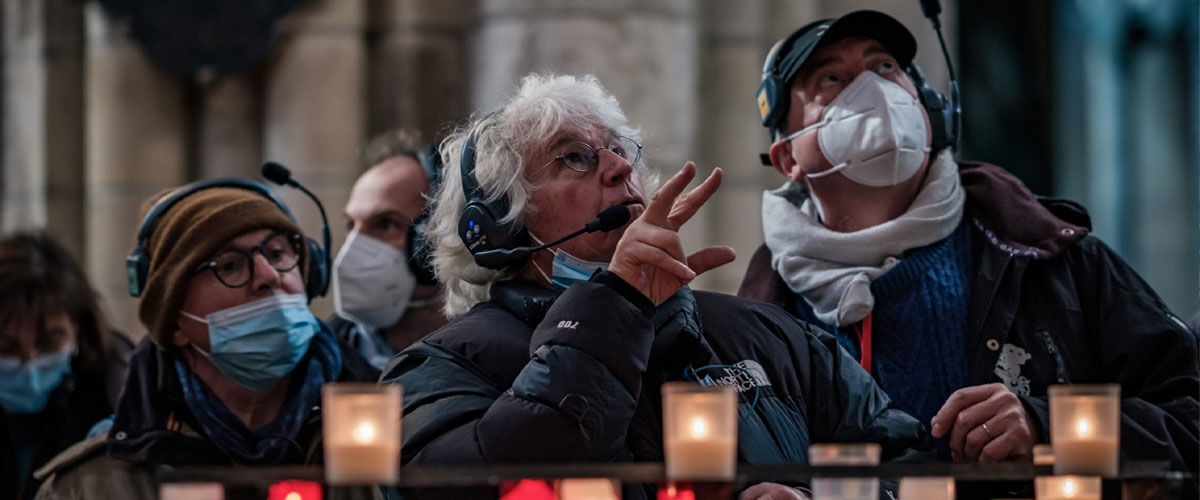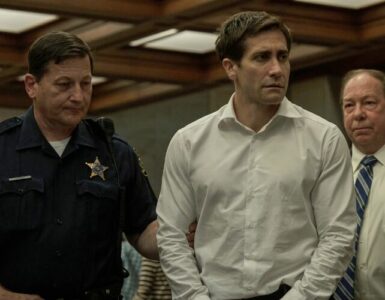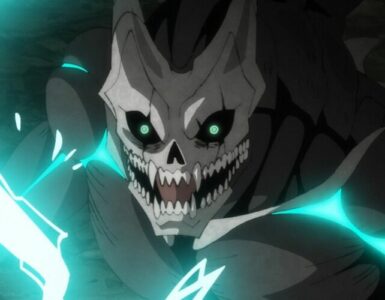- Shares
- 34
The burning of the Notre-Dame was a moment many Parisians will not forget. A symbol of national identity and great history, the cathedral stood firmly for over 800 years before it caught fire in April 2019, and among those who remember that fateful day was French film director, screenwriter and producer Jean-Jacques Annaud, of Seven Years in Tibet fame.
“I was in a little house that my parents built when I was a kid. I found an old radio and I was waiting for the speech that our president had to deliver because we’re in the middle of the riot. I wanted to listen to what the President will decide, instead, I’m hearing that the cathedral is on fire!” shared Annaud in an exclusive interview with Geek Culture.
“And as it goes, it sounded like a screenplay and I’m saying to my wife, ‘Oh my god, you have so many directors that like to rush to do this’. Only nine months later, a friend of mine said to me, ‘Would you like to supervise a documentary montage of elements of the cathedral and fire for big cinema?’ And then I got hooked right away.”
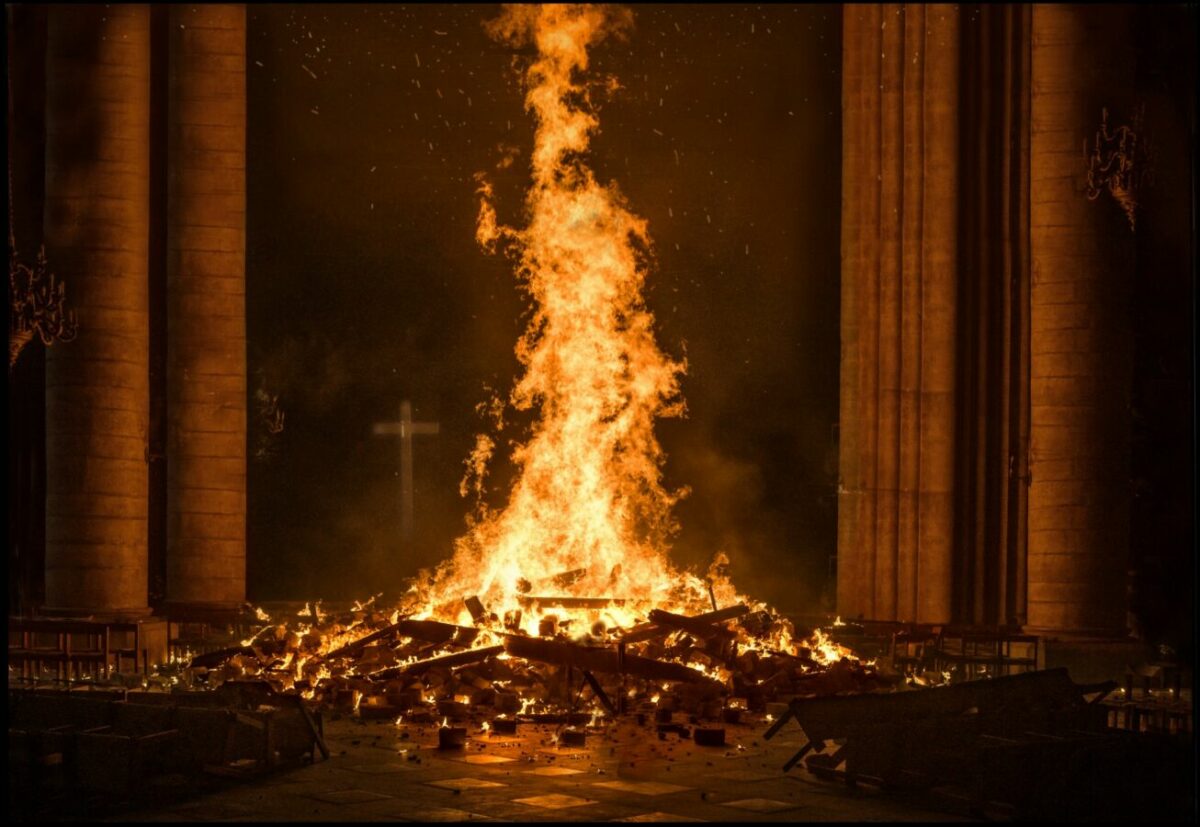
Notre-Dame on Fire is a drama-disaster film that charts the burning of the cathedral and the men and women who put their lives on the line to save the landmark. It sees the moments leading up to the fire – theorising two or more ways the Notre-Dame could have caught fire, to the way the authorities rushed to the scene, and how the firefighters risked their lives to put it out.
But what makes Notre-Dame on Fire a unique film is Annaud’s dramatisation of the event, where he uses drama and emotion to create tension and a hero-villain story between the burning cathedral and the fire that engulfed it.
“When you read or write a screenplay, you usually have to have a main character. It’s a story of someone and the basic structure is to have this someone that you identify with in trouble. Therefore, here the structure is quite simple. You have an international star and woman, the most famous woman in all of France, which is this building, Lady of Paris and we have the villain, fire, very photogenic and charismatic,” explained the director.
“Fire is a dangerous villain and it’s a charismatic villain. And then the situation is you have the good doctors rushing to help the star to survive, and they can’t reach it. And they’ve taken lots of risks and we care for the star but we also care for the good doctors. And we love seeing the fire, but we know it’s the most dangerous enemy. So in terms of dramatic structure, it’s impeccable.”
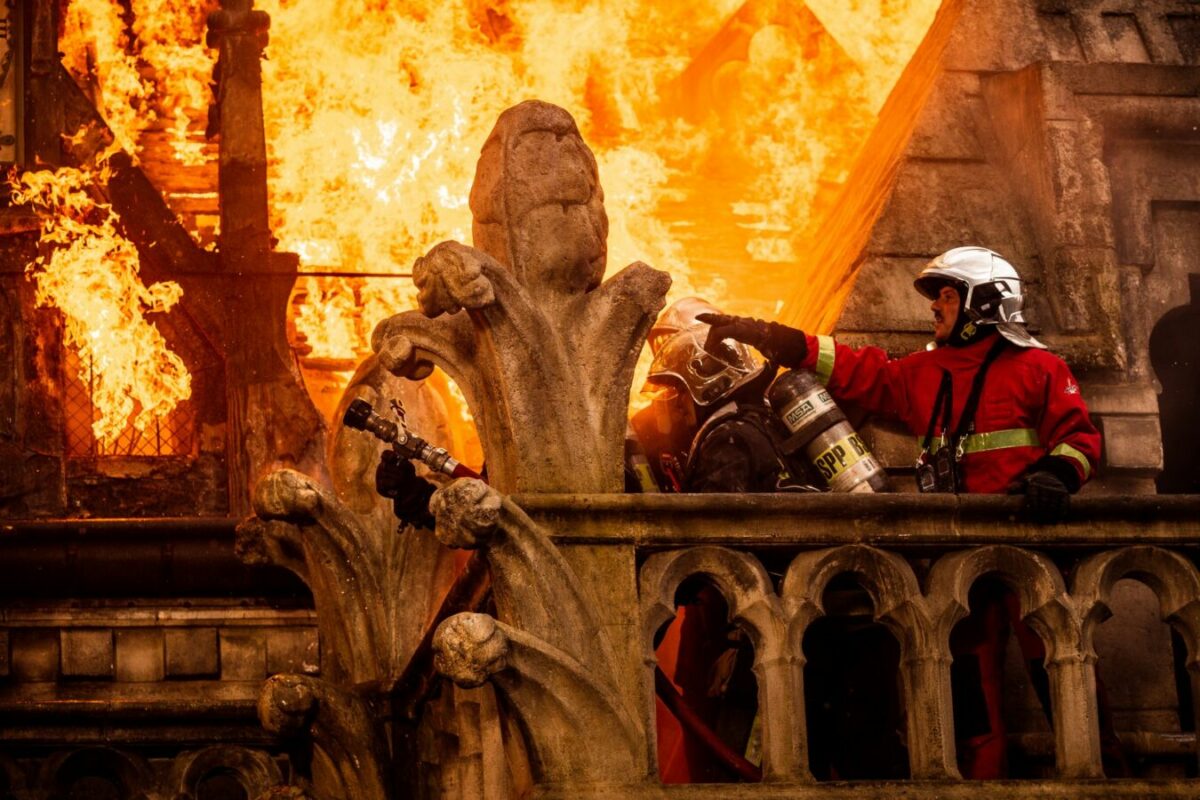
Although a drama, there were some comedic moments that Annaud included in the film, including an elderly woman panicking over her cat stuck on the roof whilst the Notre-Dame was burning in the background. There were also scenes of the Notre-Dame curator forgetting the code to a locked safe.
“The poor guy. He knows the code by heart but he doesn’t remember the code a minute later. In reality, in most tragic moments, you have comical relief. That was the charm of this movie, sometimes it’s a catastrophe movie, sometimes it’s an emotional movie, sometimes it’s a comedy and the mix of that is very good because people get tired,” said Annaud.
The film used a mix of real-life footage and shots of his own to recreate the burning of the cathedral for his movie, and his team pulled together 35,000 videos and hired a team of editors to do a selection. Some of this real-life footage included those of falling debris, the traffic jam it caused, or wide shots of the incident. After compiling suitable footage, the editors spent another 100 hours curating a selection that Annaud could use in his film. From that selection, Annaud picked videos and images that would complement his own shots.
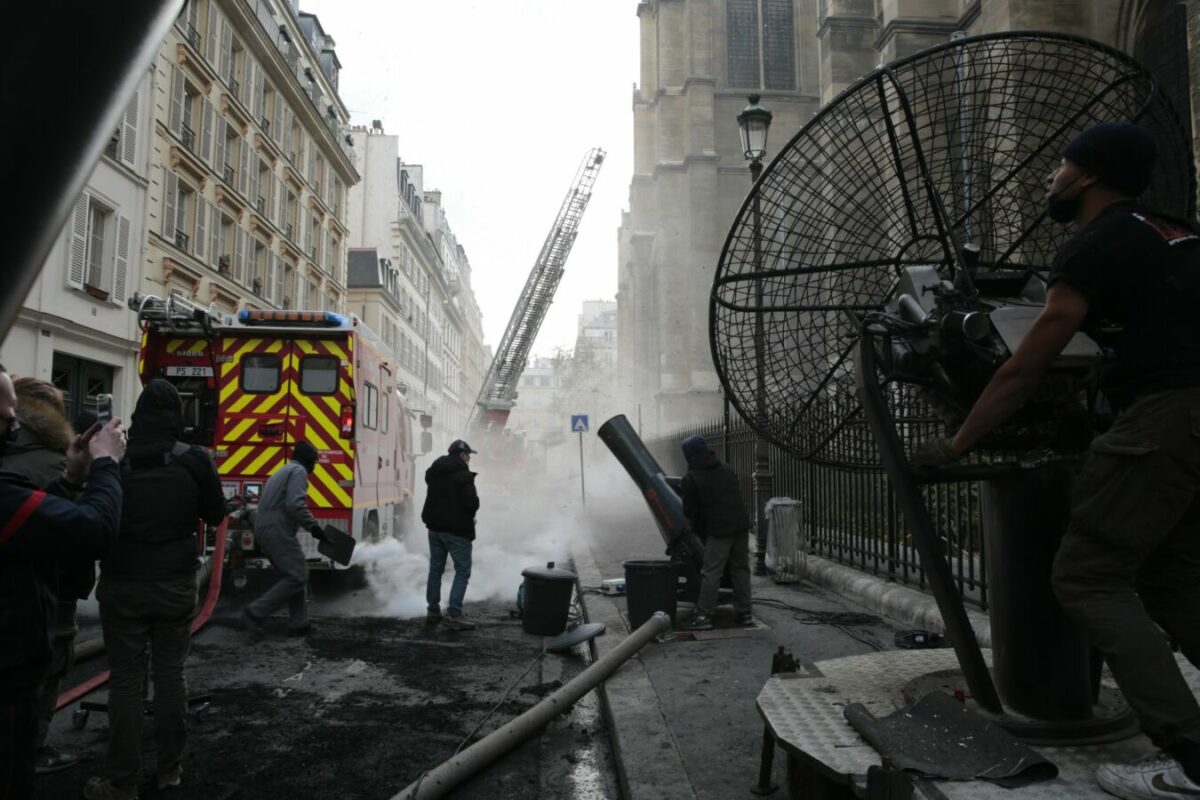
The director also used clips of other cathedrals to recreate certain parts of the Notre-Dame that had either not been reconstructed at the time of filming, were lost in the fire, or he didn’t receive permission to shoot. Annaud also went so far to recreate a replica of the Notre-Dame where necessary.
“You have some stuff that was shot minutes before the fire by television. And it was Easter so I used that footage because then it really establishes a real cathedral and then I use the different cathedrals to mix that. I shot the beginning, the entrance when the Senegalese guard got his job, that was in the cathedral in Notre-Dame. Also the little corridor where the other guard walks up to the top of the sacristy – that was not Notre-Dame,” Annaud clarified.
“We did the replica, therefore, you know, the matching was impeccable. Everything in front of the cathedral, I shot everything. I get permission to shoot for almost a month in the cathedral and all around Paris. So everything you see is Paris, from the real place. I was fortunate enough not to suffer too much from the scaffolding and all that and sometimes I did erase a crane or something. This is where visual effects are easy. But you know this is not a film with fire that’s digital.”

You read that right as in the film, Annaud decided that a digital recreation of the fire would not be authentic, so he created a real fire when making Notre-Dame on Fire. While it was no easy feat, the director is happy to share how he managed to orchestrate a fire that was impactful on screen, whilst managing the health and safety of his production crew. The process took several months of planning, and devised with a high level of confidence so that no one was at risk of getting hurt, and that the director could easily manage and control the shoot.
“So in order to have big flames, first of all, you have to have control over each flame, therefore you have lots of knobs. We had about 100 different pipes so if I wanted to see in this [interview] room, if I wanted to have fire around the frame of the door, I would have pipes behind and blowers that would push the flame inside here. If I asked that the day before, it wouldn’t work. If I asked that two months before, I would test it several times and when I shoot, it’s all prepared. There’s no surprise,” explained Annaud.
“Of course, it was very dangerous because when you light up so much fire, if there was not enough oxygen in the studio after one minute and 10 seconds we had to run away. I would stop the cameras, check that all the cameras are rolling and when they were rolling, we lit up the fire so that’s when the minute is starting. After a minute and 10 [seconds], we had to be out of the studio. We had masks and everything, we looked like cosmonauts,” he continued.
“On the stage itself, we kept only 40 people. We were 200 crew so most of the crew was outside looking at what was happening via televisions but the people inside it, that was my main worry, that someone would fall out. So we knew that 40 people [were inside] and each one would give a little identifying call when they go out.”
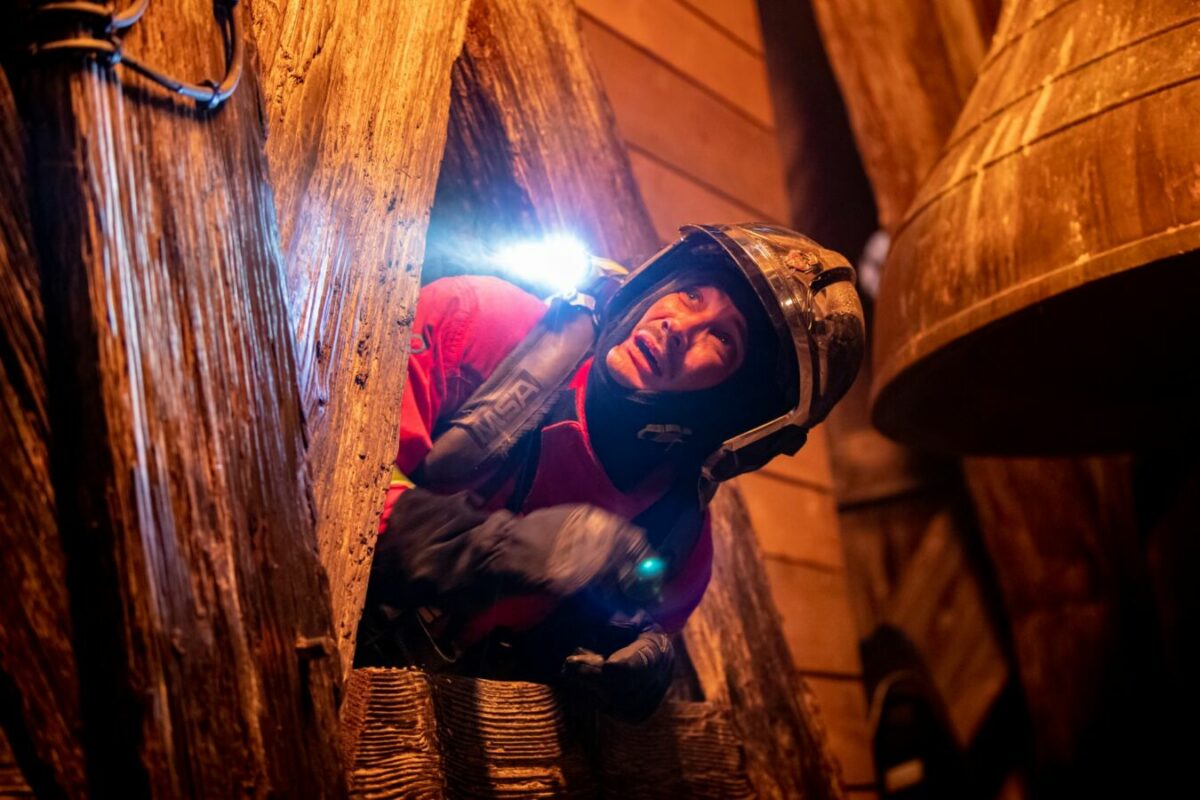
Annaud wanted his film to be as accurate as possible and whilst plenty of efforts were put into achieving that – from recreating a fire, using real-life footage and shooting on location to name a few, there was one thing the director couldn’t get accurate – what actually started it. The director theorised a few ways in which the fire could have started, but never alluded to the real reason as the reason for the fire remains a mystery even to this day.
“I think I will never know. You will never know because what I know is the following – one person has access to the police files. After seeing the film he sent me a lovely letter saying ‘Well, everything you suggested is what we checked.’ I assume that it’s probably what we call a long fire, which is something tiny like cigarettes, or a short circuit but probably it didn’t start right away,” shared Annaud.
Although the burning of the Notre-Dame was heartbreaking, Annaud still has fond memories of the iconic building. His best memory of visiting the cathedral was when he was seven and taking a photo of it with his first camera.
“When I was seven, I was offered my first little camera and the first thing I did, of course, took a picture of my mother because she offered me this camera. The second picture I took was on the top of Notre Dame because it was very impressive,” reminisced Annaud.
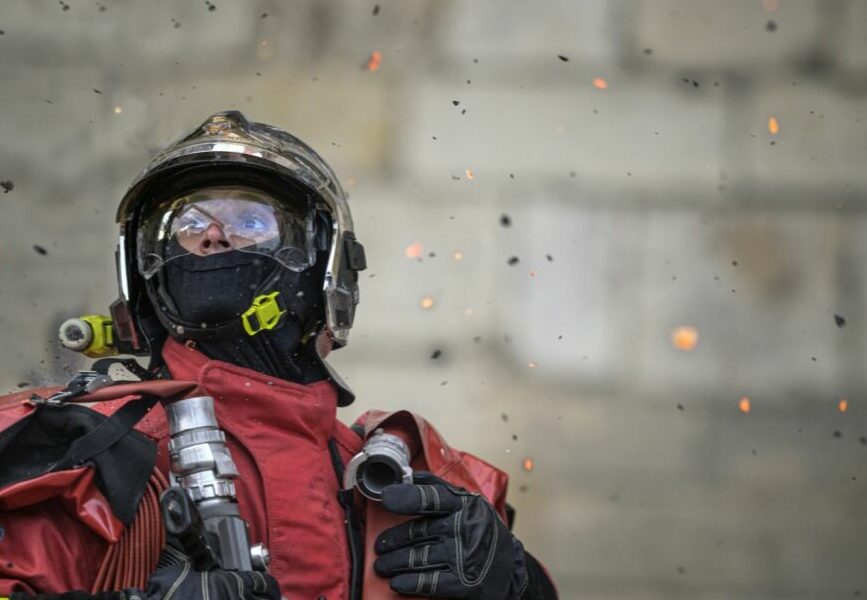
His admiration of the Notre-Dame at a young age led to his appreciation for such religious buildings and monuments. In fact, Annaud said it might have even influenced his career, having made films like Seven Years in Tibet and The Name of the Rose.
“Also I live nearby, walking distance, five minutes away. I see the cathedral from my balcony so it’s become something very personal. I believe that this is why I decided to make pictures of sacred monuments, so temples, even mosques and all that,” shared Annaud.
“But I love French architecture and I still have those pictures – thousands of monasteries, churches, cathedrals, so in a way this is why I did movies like The Name of the Rose, Seven Years in Tibet, which deals with sacred religious places while I am not. I have great respect for people’s beliefs, and great respect for all religions.”

